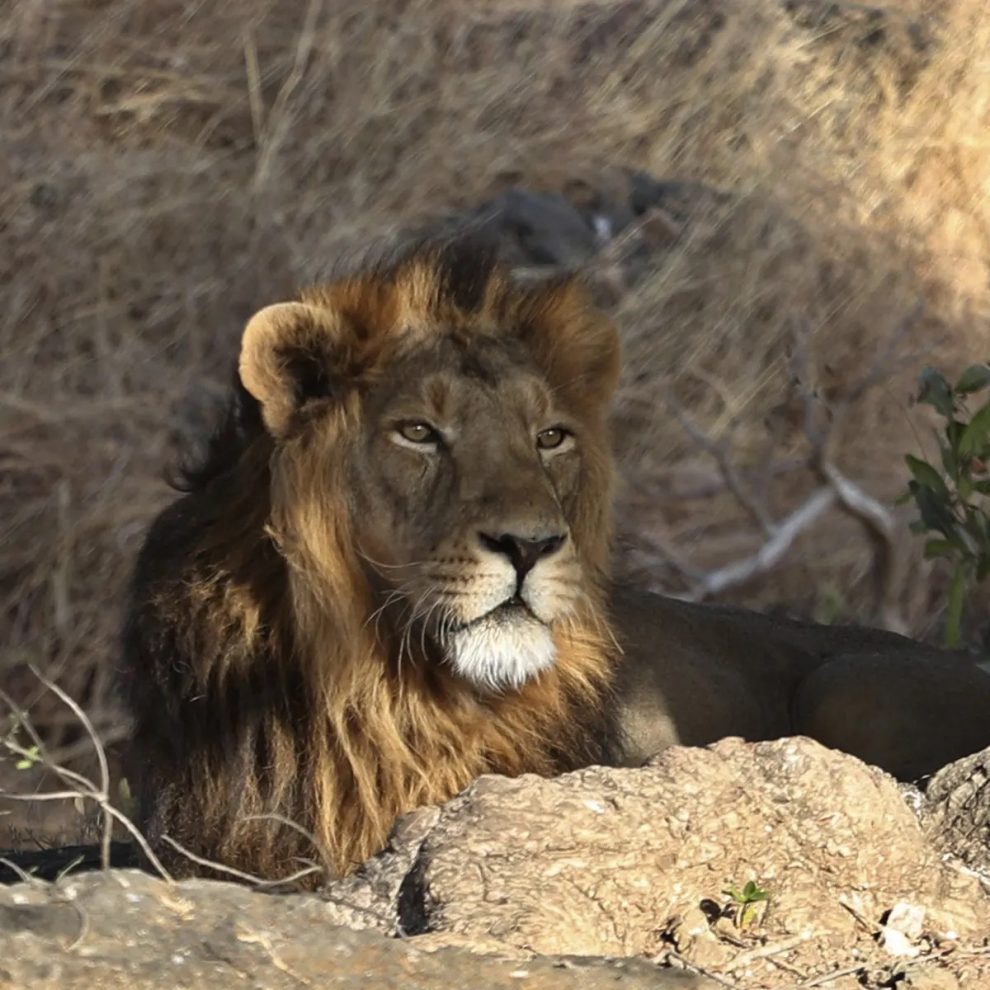The last of the world’s Asiatic lions live in Gujarat state, but as the apex predators outgrow their forest reserve, they are moving to the seaside.
It was one morning, while walking on the beach in Gujarat, that wildlife expert Meena Venkataraman spotted a pair of paw prints. But this was no dog or fox that had visited. The footprints belonged to an Asiatic lion, the king of the jungle – and, increasingly, the beach.
Once found throughout Mesopotamia, Persia and the Indian subcontinent, the Asiatic lion was almost driven to extinction by the early 1900s due to hunting and habitat loss, before a nawab in the western Indian state of Gujarat intervened. Today, the state is the only home of the Asiatic lion.
While most of the nearly 700 animals counted in 2020 are found in the dry, deciduous terrain of the Gir forest and its surrounding protected areas, many have been moving to seaside locales.
Between 2010 and 2020, the number of lions living along Gujarat’s coast rose from 20 to 104, and forest officials in Gujarat say coastal habitats are now the most significant of all satellite habitats that the lions occupy.
Finding lions in coastal areas is not unprecedented – in Namibia, lions have adapted to the beach, where they hunt seals – but in India it is unusual, says Venkataraman, principal consultant at Carnivore Conservation and Research.
“Lions using the sandy beach and walking at the edge of the sea is an incredible sight. I have had the good luck to see that a few times,” she says.
In November 2022, researchers from Gujarat’s forest department released findings from the first study of coastal Asiatic lions. Between 2019 and 2021, they monitored 10 lions fitted with GPS radio collars. One question they set out to answer was what kind of habitats the coastal lions were using, says Mohan Ram, deputy conservator of forests in Gir, and lead author of the study.
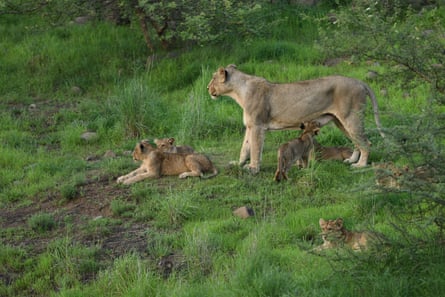
The answers were surprising, says Venkataraman, who was also part of the study. “They shelter in the prosopis plantations in the western coasts [of Gujarat]. These are very thick and very thorny habitats,” she says, adding that it’s unusual because the lion is believed to be a more “open area” animal. Meanwhile, “in the eastern coasts, lions are actually making use of salt pan areas and mangroves”.
The researchers also compared the characteristics of the dispersing lions to those in Gir. “Interestingly, we found the home ranges to be different,” says Venkataraman. Lions living in coastal habitats had larger home ranges – the area where an animal usually roams – than those living in the Gir protected areas. Those living between the forest and coastal areas – the “link lions” – were found to have even larger home ranges, she says.
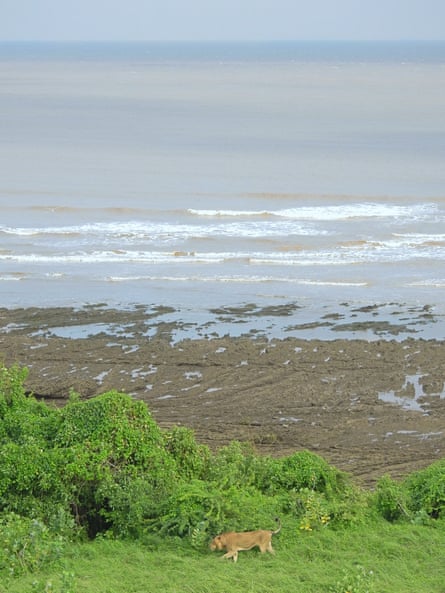
Unlike Namibia’s coastal lions, those in Gujarat do not prey on marine animals but, says Venkataraman: “With time, they may develop a taste for scavenging dead fish.”
They mostly feed on wild boar, nilgai (a type of antelope) and stray cattle, but in 2020 there were reports of alion preying on a turtle. Ram says forest officials are studying the coastal lions’ food habits and hunting patterns.
The movement of lions to Gujarat’s coast is not new but more of a “recolonisation of their lost territories”, says Kausik Banerjee, a wildlife researcher who was not part of the study. But the predators’ presence on the beach is also indicative of a larger problem of limited space as their numbers grow. “The protected area of Gir [approximately 1,880 sq km] reached its biological carrying capacity for lions long ago,” Banerjee says.
Gujarat officials recently announced plans for a second home for Asiatic lionsin the state’s Barda wildlife sanctuary, about 60 miles (100km) from Gir. The Indian government is also reassessing a proposal to relocate some of the lions to the neighbouring state of Madhya Pradesh. In 2013, India’s supreme court ordered the relocation but it never happened, some experts say, because of Gujarat’s reluctance to part with the lions it is so proud of.
However, as lions move outside protected areas, there is growing concern about human-lion conflict, says Banerjee, amid sporadic reports of lions attacking humans. They also sometimes kill livestock, but farmers receive compensation when that happens.
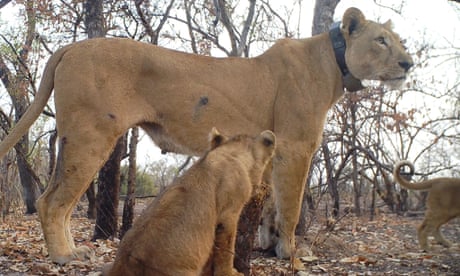
Local communities revere the lions, and that has made coexistence possible, says Banerjee. But, Venkataraman says, “as populations increase, [conflict with humans] is definitely a problem, not just with lions but with all wild animals the world over”.
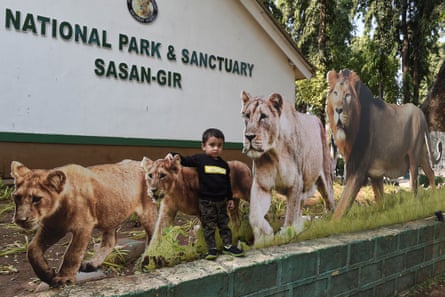
Developers need to be increasingly mindful of the coastal lions’ migration routes, say the researchers. “Development is necessary for humans, but there needs to be proactive mitigation measures,” says Ram. “For example, if a new highway is being constructed, there should be an underpass so as to not disrupt the movement of wildlife.”
While lions may not be going to the beach for the view, it doesn’t mean they don’t enjoy it. Ram has often observed them sitting on the shore in the evenings, enjoying the sea breeze. It is a sight that may become increasingly common in years to come.
Source: The Guardian
























